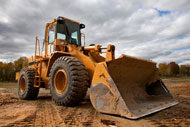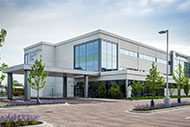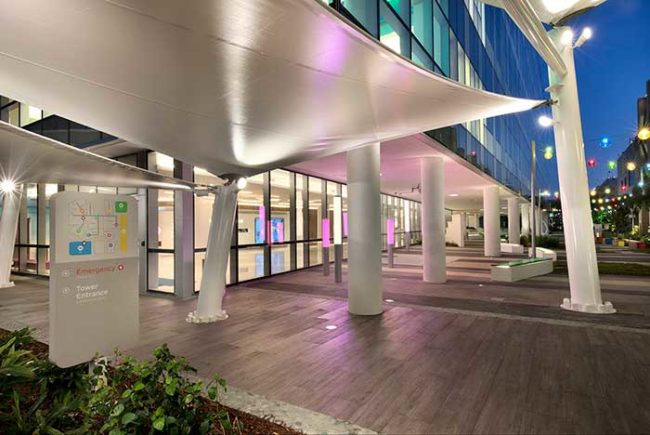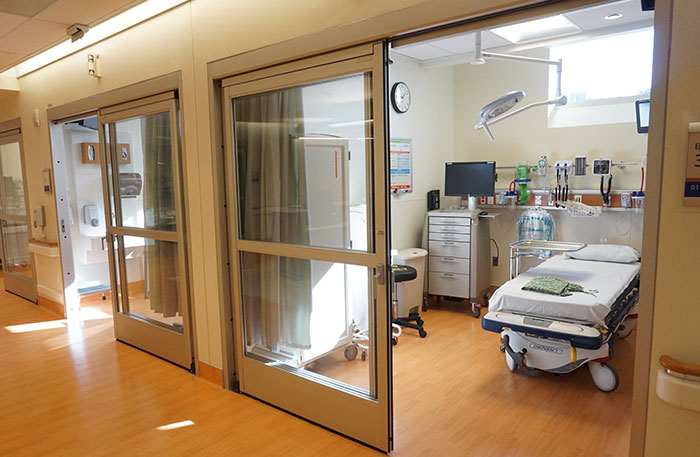
The new Barbey Family Emergency and Trauma Center is six times larger than its predecessor.
Anticipating an increase in patient demand for quick, high-quality care and in comfort, the new state-of-the-art Barbey Family Emergency and Trauma Center opened last week on the Scripps Memorial Hospital La Jolla campus.
The new $33 million facility includes 51 private beds, four ambulance bays and the latest medical technology for treating patients for anything from cuts to life-threatening injuries.
The 33,000-square-foot center, which opened Sept. 26, is six times larger than the space it replaces in the campus’ original hospital building. The new facility is located on the first floor of the Prebys Cardiovascular Institute.
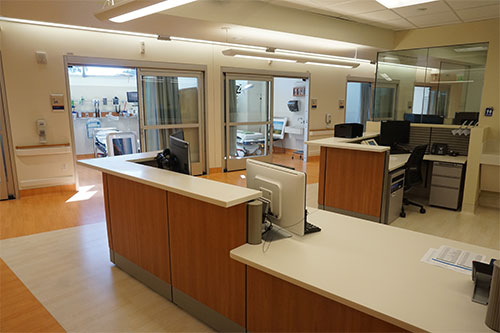
The new facility includes 51 private beds and is equipped to handle minor to life-threatening injuries.
“By expanding our emergency and trauma services, we are strengthening our mission to serve the health care needs of our community, while offering the highest quality of care possible,” says Chris Van Gorder, president and CEO, Scripps Health, San Diego.
The center is equipped with a mobile fluoroscan X-ray device that can be used to quickly create detailed images of bones and joints, giving doctors a baseline for follow-up examinations. Overhead imaging devices are available throughout the entire trauma area, allowing for X-rays to be taken on two patients simultaneously.
Additionally, a radiology department embedded in the center allows for speedy and convenient access to other state-of-the-art imaging technologies.
They include a low-dose CT scanner with full cardiac and neurological scanning capabilities, a 1.5 tesla MRI, an ultrasound unit with diagnostic and vascular scanning capabilities, and two diagnostic X-ray imaging suites.
Another important piece of technology at the center is a transesophageal echocardiography device, which lets physicians view the heart’s valves and chambers from an ultrasound probe guided down a patient’s throat as clinicians perform CPR. Without this device, CPR would have to be stopped while the patient is taken to an echocardiography lab for scanning.
Other highlights of the facility include:
- Four trauma bays that can expand to eight in a disaster.
- Four psychiatric beds.
- Four negative pressure rooms for infection isolation.
- Four ambulance bays.
“With volumes expected to increase over the coming years, our expanded capacity ensures that Scripps will be able to meet the growing demands for emergency and trauma services,” says Martin Griglak, M.D., medical director and chairman, department of emergency medicine.
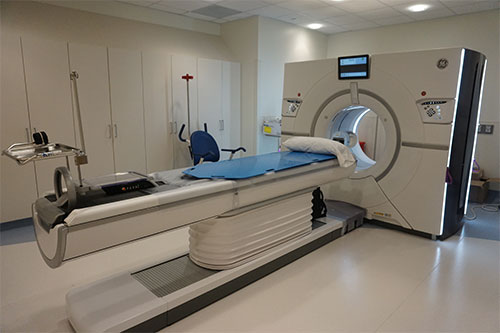
The center features a low-dose CT scanner , a 1.5 tesla MRI, an ultrasound unit and two diagnostic X-ray imaging suites.
Each room and bay contains a continuous vital signs monitor; a bedside clinical staff computer; a rolling bed that can measure the weight of a patient for medication dosage and other needs; and a storage cart filled with extra pillows, blankets and other supplies.
All of the rooms also include flat-screen televisions and seating for family members and other visitors. The screens can be used to display patient images, such as X-rays, and other medical information during discussions with clinicians.
The 16-bed David Whitmire Hearst Jr. Foundation Observation Area offers more secluded rooms designed for patients who are waiting to undergo more extensive testing, particularly elderly patients who might be more comfortable in a quieter atmosphere. Each room is enhanced by natural light from large windows.
A waiting room bathed in natural light from large windows provides comfortable seating and tables equipped with power jacks for charging mobile phones, tablets and laptop computers.
The center also features a subdued color palette to help increase patients’ sense of well-being and to boost the healing process. Artwork depicting San Diego’s natural beauty is placed throughout the center and in every patient room, thanks to the generosity of donors who have supported the project.
“The design of this new facility places an emphasis on patient comfort and staff efficiency,” says Imad Dandan, M.D., trauma medical director.
Planning and construction of the center was completed in just over a year on time and on budget. The designer was HOK and the design-build general contractor was McCarthy Building Cos. Inc.
A team of Scripps emergency and trauma physicians, nurses and technicians worked directly with architects in designing the center, and that effort included visits to three other emergency/trauma centers in California.
Want to see your new health care construction project featured on HFM Daily? Email project information and photos to Senior Editor Jeff Ferenc or tweet to him @JeffFerenc.



